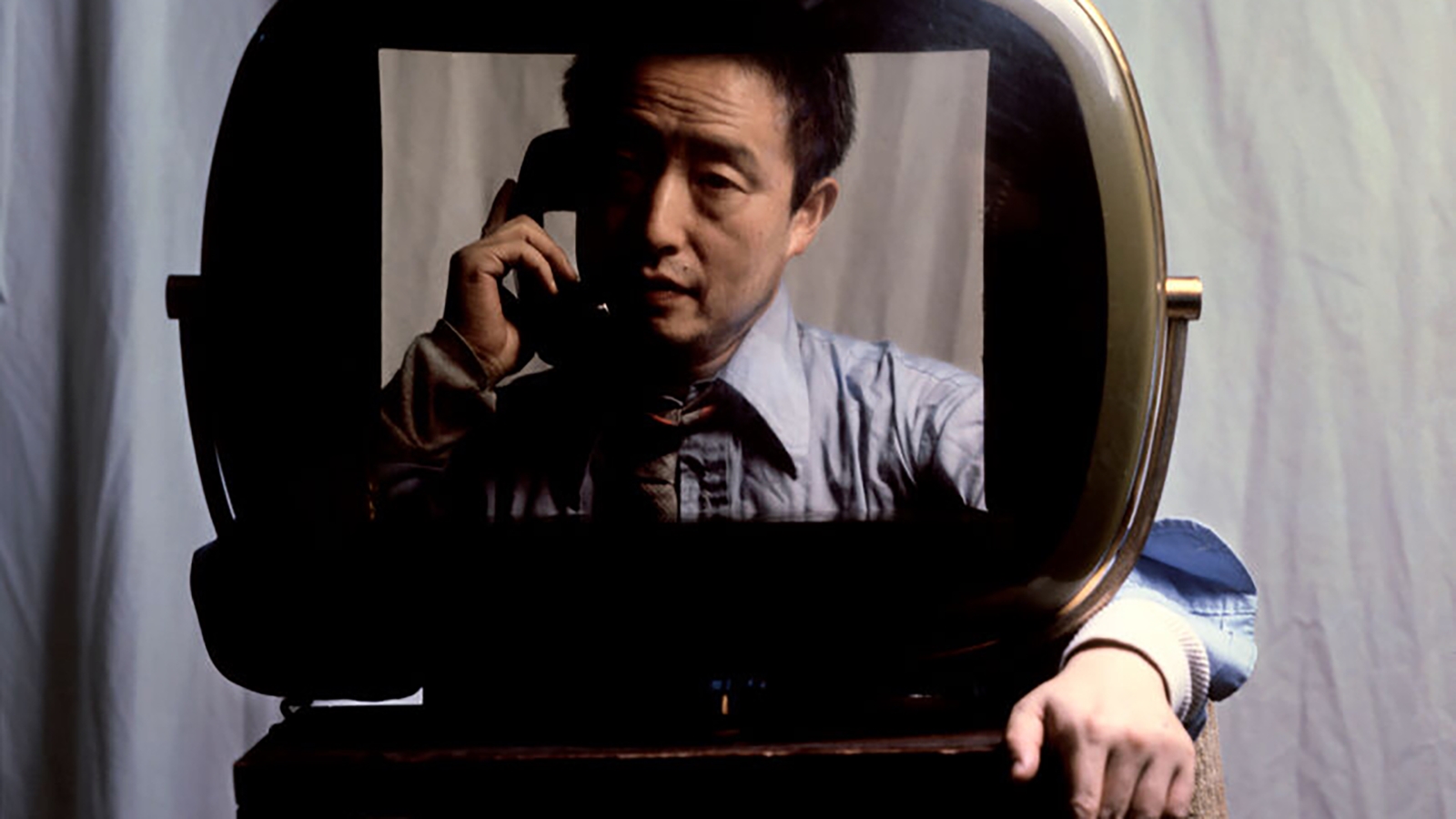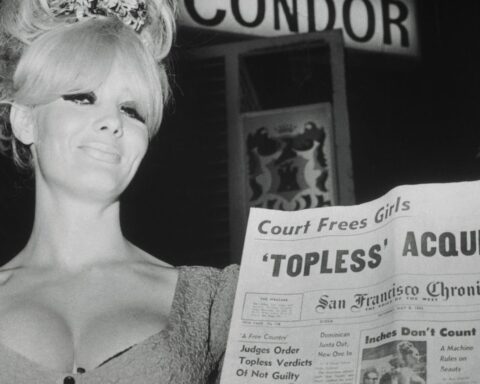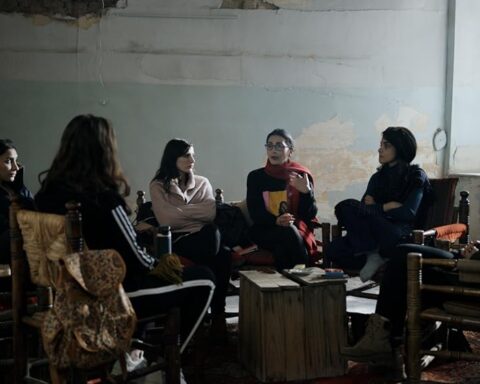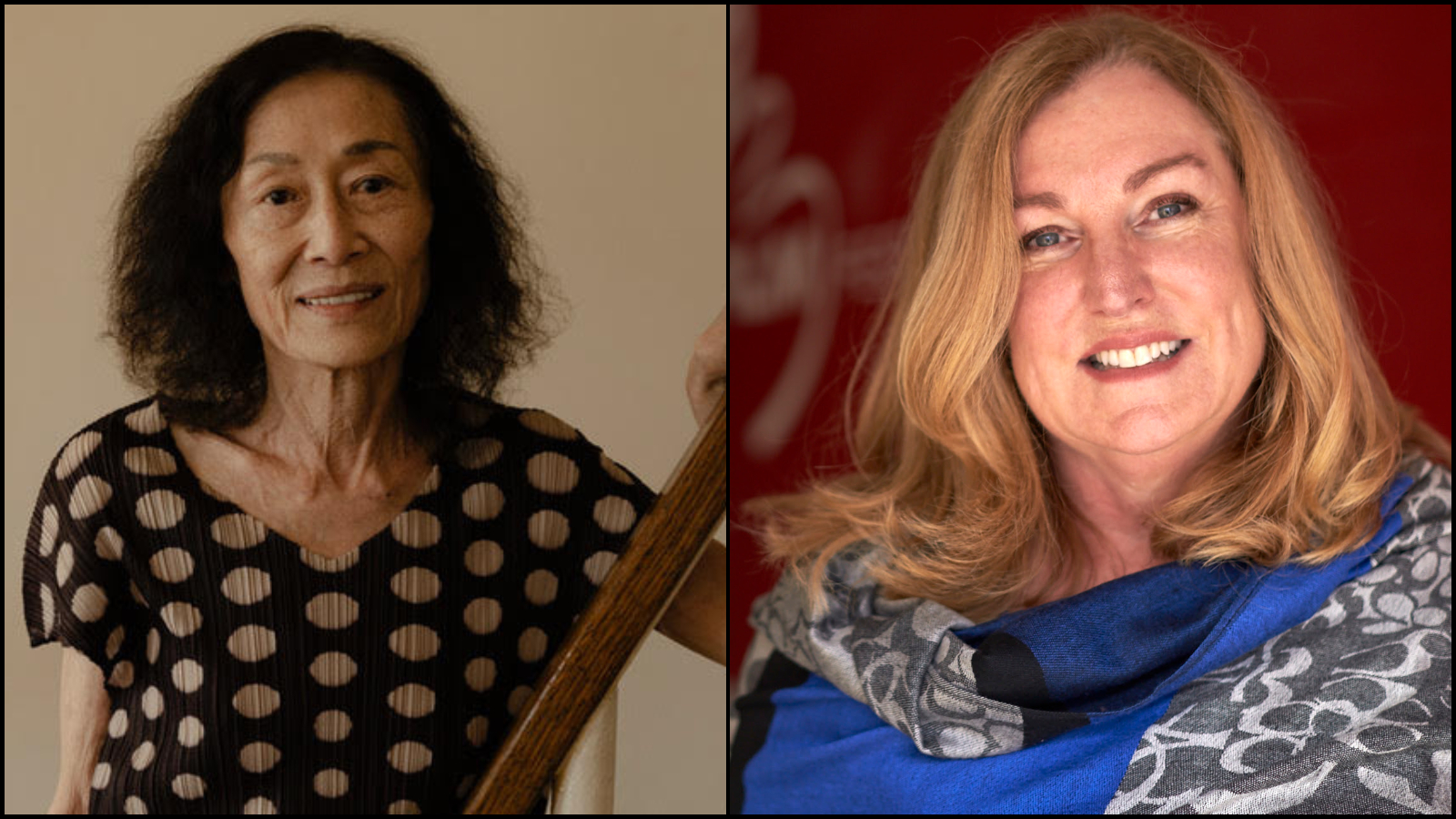Nam June Paik: Moon Is the Oldest TV
(USA, 107 min.)
Dir. Amanda Kim
Programme: U.S. Documentary Competition (World Premiere)
Admittedly, I am not the most cultured person when it comes to visual arts. In fact, I had to look up what “video art” is before watching Amanda Kim’s film, Nam June Paik: Moon Is the Oldest TV, about the pioneer of the art form. While I can’t say that my ability to appreciate art has vastly improved after watching the documentary, I can say with certainty that I have an appreciation for Paik as a man and an artist who shook the world around him.
Nam June Paik is the cradle-to-grave story of one of the art world’s most prolific figures, and yet one who is relatively unknown to those of us outside of it. Paik was a worldly man who spoke numerous languages and lived all over the globe. He was born in Japanese-occupied Korea and, along with the rest of his family, was forced to flee the country in 1950 due to the Korean War. He received higher education in Japan and West Germany and eventually settled in the USA where he would live for the majority of his life.
Kim follows Paik’s career with archival footage of his performance art (and the audience’s decidedly divided response to it) mixed with traditional talking heads interviews with colleagues, friends, and family members. Actor Steven Yeun narrates Paik’s written work throughout Nam June Paik, which complements the older footage very well. The film also details some of Paik’s early influences that introduced him to the art world, including John Cage who Paik uses to draw a delineation in his life where everything up to 1957 is considered “B.C.,” that is, Before Cage.
One of the more amusing moments in Nam June Paik is footage from one of Paik’s most memorable performances where he uses his body to create art by dunking his head and hands into a bucket of paint and slowly crawling across a scroll of paper. In the next instance, he takes a pair of scissors and leaps at his hero and, at this point, colleague and friend Cage, who sits in the front row of the audience. After cutting Cage’s necktie off (and shampooing Cage’s hair with soap), Paik runs out of the studio. Minutes later the telephone rings and the audience is informed that it is Paik on the line telling them that the performance has finished.
Other artistic works by Paik are shown in the film, such as a robot built by him that he orders around the street and a performance piece where he continuously tips a piano over and makes music/art/noises by taking a hammer to the instrument. Paik is also shown using a naked female’s body as a cello wherein he holds the string taut against her bare skin and uses a bow in a pointless attempt to play even one note.
My ability to grasp enough straws to form some semblance of an interpretation of Paik’s work is admittedly pedestrian at best. But where Paik, and Kim, piqued my interest in the film is understanding how Paik came to be this quirky artist.
Coming from a conservative, war-torn country under a violent occupation, my natural assumption had been that Paik was the epitome of the struggling and tortured artist, using art to lift him out of his reality. Instead, it is revealed rather late in the film that the Paik family was one of the country’s wealthiest families, even being considered a chaebol like the Samsung family.
Paik’s family status also explains why they were forced into exile during the Korean War (Paik’s father worked with/for the Japanese during the occupation). Albeit a delicate matter even so many years later, this is a significant aspect of Paik’s story that would have been worth exploring further as it would have surely shaped him into the man and artist he became.
As the film follows Paik’s return to South Korea after being away for over 30 years, the true power of Paik is finally gleaned. With 1984 approaching, Paik uses this occasion to create the first satellite video art installation on New Year’s Day called, “Good Morning, Mr. Orwell.” Paik’s piece serves as the antithesis to George Orwell’s famous dystopian vision for the world offering instead bright colours and psychedelic images stretched across TV screens. In South Korea alone, 6 million people tuned in to watch the one-hour special.
Because of the political instability of South Korea, censorship and media restrictions were common but what Paik demonstrated to his countrymen and women in that hour was the power of television (and in turn media) as a gateway into worlds and ideas far different to their own. By extension, Paik stood as an example for young Koreans to break away from the confines of their environment and find their own singular voice.
While Paik’s art might have gone right over my head, Kim’s realization of Paik’s life successfully digs into the how and why of Paik. Nam June Paik is the portrait of a man who influenced countless new artists around the world, and, maybe more importantly, is a film that understands and shares the importance of art to a society’s health.













